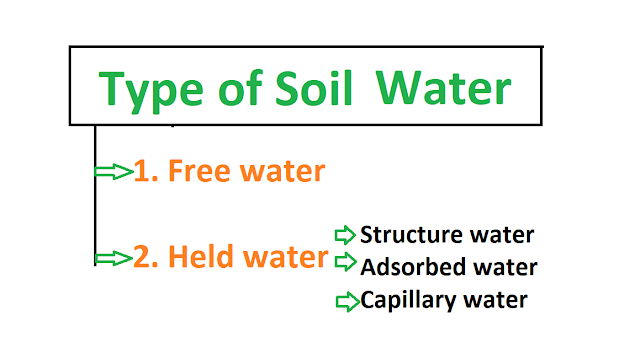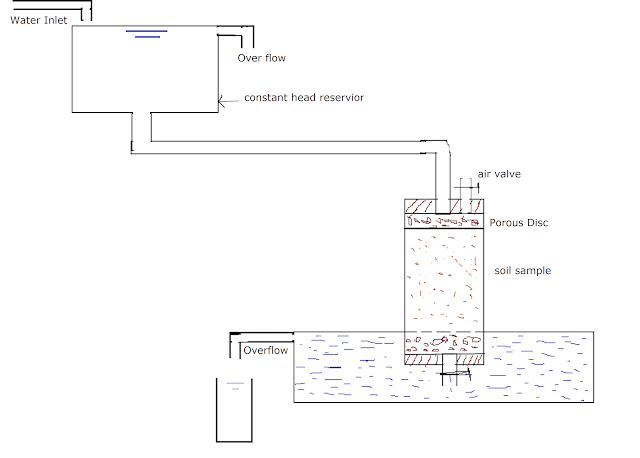Permeability of soil
However the velocity of water or say permeability may depend upon how much width of these interstices, for example, coarse grain soil give high permeability effect as compare to fine grain soil, because the particle gap is large in case of coarse grain as compared to fine grain.
generally, all type of soil is permeable, if the soil is a very low permeability its called impervious soil. permeability is very important engineering property. it helps in design filter, prevent hydraulic structure piping and seepage.
constant head permeability test
Procedure –
Take the mold and measure the dia, length, weight, volume properly for future calculation.
Take 2.5 Kg of a soil sample, mix it properly and convert it into a wet soil sample, then placed into in metallic mold, and level it properly.
calculate mold mass with the soil sample.
separate some amount of sample from our prepared sample for later water content determination.
Place porous disc at top and bottom of the sample and fix it properly.
from the base of the sample connect a pipe which collects the drain water to a reservoir.
Close the upward and downward valve, and apply vacuum so remaining air drains
allow water to fill mold from the top.
Connect a constant head reservoir to the inlet sample pipe.
star stopwatch
allows water to flow through the soil till the steady stage is attained.
take stopwatch reading and measure the time is taken or water is out in what time interval.
from how much supply of water and what time taken at the end in collecting jar we can find permeability.
repeat the test at least three times and collect mean value it gives an accurate result.




